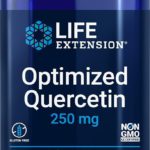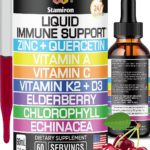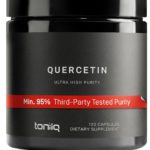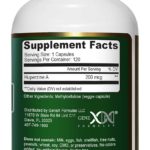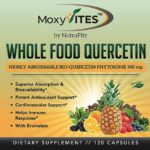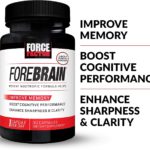Curious about why N-acetyl cysteine suddenly disappeared from store shelves? Look no further! In this article, we will explore the reasons behind the vanishing act of N-acetyl cysteine and uncover the intriguing factors that led to its removal from the market. Brace yourself for a fascinating journey where we unravel the mystery surrounding this natural antioxidant and detoxifier, which once held great potential for improving your health and well-being. Find out what happened and discover if there’s still hope for the return of this sought-after supplement.
Possible Safety Concerns
Potential for Harmful Interactions
When considering the use of N-acetyl cysteine (NAC) as a dietary supplement or medical treatment, it is important to be aware of potential harmful interactions with other medications. Due to its antioxidant properties and ability to increase the production of glutathione, an important antioxidant in the body, NAC has the potential to interfere with certain medications. For example, NAC may interact with nitroglycerin and decrease its effectiveness in treating chest pain. It is crucial to consult with a healthcare professional before using NAC to ensure its safe use in conjunction with other medications.
Allergic Reactions
While N-acetyl cysteine is generally considered safe for most individuals, there have been rare reports of allergic reactions in some cases. These allergic reactions may manifest as skin rashes, itching, swelling, or difficulty breathing. If you experience any of these symptoms after taking NAC, it is important to discontinue use immediately and seek medical attention. It is also advisable to consult with a healthcare professional if you have a known allergy to sulfur-containing compounds before using NAC.
Respiratory Issues
One potential safety concern regarding the use of N-acetyl cysteine is its potential impact on respiratory health. NAC has been commonly used as a mucolytic agent to help break down mucus and improve respiratory conditions such as chronic bronchitis, cystic fibrosis, and chronic obstructive pulmonary disease (COPD). However, some studies have suggested that high doses of NAC may lead to adverse respiratory effects, including bronchospasms and respiratory distress. Further research is needed to better understand this potential risk and determine safe dosage levels for individuals with respiratory conditions.
Conflicting Study Results
Mixed Findings on Efficacy
The efficacy of N-acetyl cysteine has been a subject of debate in the scientific community, as studies have presented mixed findings regarding its effectiveness for various health conditions. While some research suggests that NAC may have potential benefits for conditions such as psychiatric disorders, neurological diseases, and liver diseases, other studies have found limited or inconclusive evidence to support these claims. It is important to interpret these conflicting study results with caution and consider the overall body of evidence when evaluating the potential efficacy of NAC for specific health concerns.
Inconsistent Dosage Recommendations
Another aspect that contributes to the conflicting study results is the inconsistency in dosage recommendations for N-acetyl cysteine. Different studies have utilized varying dosages, making it challenging to determine the optimal and safe dosage for specific conditions. Additionally, individual factors such as age, weight, and overall health may influence the appropriate dosage of NAC. It is crucial to consult with a healthcare professional before starting NAC supplementation to ensure a proper dosage tailored to individual needs.

Controversial Regulatory Decisions
Different Approaches Across Countries
Regulatory decisions regarding the availability and regulation of N-acetyl cysteine may vary across different countries. Some countries have classified NAC as a dietary supplement, allowing it to be readily available over the counter. Meanwhile, other countries have classified it as a prescription medication due to its therapeutic uses. These differing approaches can lead to confusion among consumers and healthcare professionals, highlighting the need for international harmonization in the regulatory oversight of NAC.
Lack of Consensus Among Regulatory Bodies
In addition to the variation in approaches across countries, there is a lack of consensus among regulatory bodies regarding the regulation of N-acetyl cysteine. The lack of a unified regulatory framework makes it difficult to establish clear guidelines and standards for the production, labeling, and marketing of NAC products. The absence of standardized regulations may contribute to issues such as inconsistent product quality, misleading claims, and potential safety concerns. Collaborative efforts among regulatory bodies are necessary to address these challenges and ensure the safe and reliable availability of NAC to consumers.
Underlying Commercial Factors
Patent Expiration and Generic Competition
Commercial factors, such as patent expiration and generic competition, can significantly influence the availability and marketing of N-acetyl cysteine. When a patent for a specific NAC product expires, other pharmaceutical companies can produce generic versions of the medication. This increased competition can lead to lower prices, making NAC more accessible to consumers. However, the entry of generic products may also create challenges for the original patent holder, affecting their market share and profitability.
Marketing and Branding Strategies
The success of N-acetyl cysteine products in the market can also be attributed to effective marketing and branding strategies. Companies often highlight the various health benefits and potential therapeutic uses of NAC, emphasizing its antioxidant properties and detoxifying effects. Marketing campaigns can influence public perception and generate demand for NAC products. However, it is important for consumers to critically evaluate the information provided by these campaigns and consult with healthcare professionals for accurate guidance on NAC usage.

Emerging Scientific Discoveries
Advancements in Alternative Antioxidants
As scientific research progresses, there have been advancements in understanding alternative antioxidants that may offer benefits similar to N-acetyl cysteine. These alternative antioxidants, such as alpha-lipoic acid, Coenzyme Q10, and resveratrol, have gained attention for their potential in combating oxidative stress and supporting overall health. The emergence of these alternatives provides a wider range of antioxidant options for individuals seeking to incorporate these compounds into their health regimen.
Improved Understanding of Cellular Mechanisms
Researchers have made significant strides in unravelling the cellular mechanisms underlying the effects of N-acetyl cysteine. This improved understanding has shed light on its role in modulating oxidative stress, regulating cellular signaling pathways, and supporting various biological processes. The elucidation of these mechanisms not only deepens our knowledge of NAC’s potential benefits but also provides a foundation for future research and the development of targeted therapies.
Public Perception and Media Influence
Misinformation and Sensationalism
Public perception of N-acetyl cysteine can be influenced by misinformation and sensationalism in the media. Misleading claims and exaggerated benefits may misguide individuals seeking to improve their health and well-being. It is important to critically evaluate information from credible sources and rely on scientific evidence when making informed decisions regarding the use of NAC. Consulting with healthcare professionals can help navigate through the noise and ensure reliable information is being considered.
Negative Publicity
While N-acetyl cysteine has shown potential health benefits, negative publicity and controversies surrounding the compound can impact public perception. Adverse events or safety concerns, even if they are rare or not well-substantiated, can generate fear and skepticism among consumers. To alleviate concerns, further research, transparent communication, and regulatory oversight are necessary to provide accurate information and maintain public trust.

Pharmaceutical Industry Lobbying
Influence on Regulatory Decisions
Pharmaceutical industry lobbying can have an impact on regulatory decisions related to N-acetyl cysteine. Major pharmaceutical companies may advocate for certain regulations or restrictions based on their business interests, potentially influencing the availability or usage guidelines for NAC products. It is essential for regulatory bodies to remain independent and prioritize patient safety and scientific evidence when making decisions regarding the regulation of N-acetyl cysteine.
Promotion of Competing Products
In addition to influencing regulatory decisions, pharmaceutical industry lobbying may also play a role in promoting competing products over N-acetyl cysteine. Pharmaceutical companies may prioritize the development, marketing, and promotion of their own products, which may offer similar benefits or target the same health conditions as NAC. This competitive landscape can impact the market presence and acceptance of N-acetyl cysteine, potentially limiting its accessibility for consumers.
Legal and Liability Issues
Product Quality Control Concerns
Ensuring product quality control is crucial when it comes to N-acetyl cysteine supplements. Due to the varying regulations and oversight of manufacturing practices, there is a potential for inconsistencies in product quality and purity. Substandard manufacturing processes or contamination may compromise the safety and efficacy of NAC products. Prioritizing reputable manufacturers and looking for third-party certification can help mitigate quality control concerns.
Litigation and Class-action Lawsuits
In the event of safety concerns or adverse events related to N-acetyl cysteine, there is a potential for litigation and class-action lawsuits. Legal actions can arise when individuals claim harm or lack of efficacy from NAC products. These lawsuits can have financial implications for manufacturers and distributors, as well as impact public perception and the overall reputation of N-acetyl cysteine. Clear communication, adherence to safety standards, and proactive measures to address potential issues are essential to mitigate legal risks.
Cost-benefit Analysis
Risk-benefit Assessments
When considering the use of N-acetyl cysteine, it is important to conduct a risk-benefit analysis. Assessing the potential risks and benefits of NAC in relation to an individual’s specific health condition and overall well-being is crucial. While NAC may offer potential benefits, such as antioxidant support and liver function improvement, it is essential to weigh these benefits against any potential risks or safety concerns associated with its use.
Economic Considerations
The cost of N-acetyl cysteine and its affordability may also be factors in decision-making. The availability of generic versions of NAC can contribute to lower prices, making it more accessible to a wider population. However, individuals should consider their budget and financial constraints when incorporating NAC into their health regimen. Exploring healthcare coverage options, generic alternatives, and discussing cost considerations with healthcare professionals can help individuals make informed decisions.
Clinical Trials and Research Gaps
Need for More Robust Studies
To address the conflicting study results and enhance the understanding of N-acetyl cysteine, more robust clinical trials and research studies are needed. Well-designed studies with large sample sizes, controlled conditions, and diverse participant populations can help establish the safety, efficacy, and optimal dosage guidelines for NAC. The scientific community should continue to conduct rigorous research to fill the existing gaps and provide valuable insights into the potential benefits and risks of N-acetyl cysteine.
Insufficient Evidence on Long-term Safety
One key research gap is the limited evidence on the long-term safety of N-acetyl cysteine. Most studies have focused on short-term use or specific health conditions, leaving uncertainties about the potential risks and safety profile of NAC over extended periods. Long-term studies assessing the cumulative effects, potential interactions, and adverse events associated with prolonged NAC use are necessary to ensure comprehensive knowledge and informed decision-making regarding its long-term safety.

